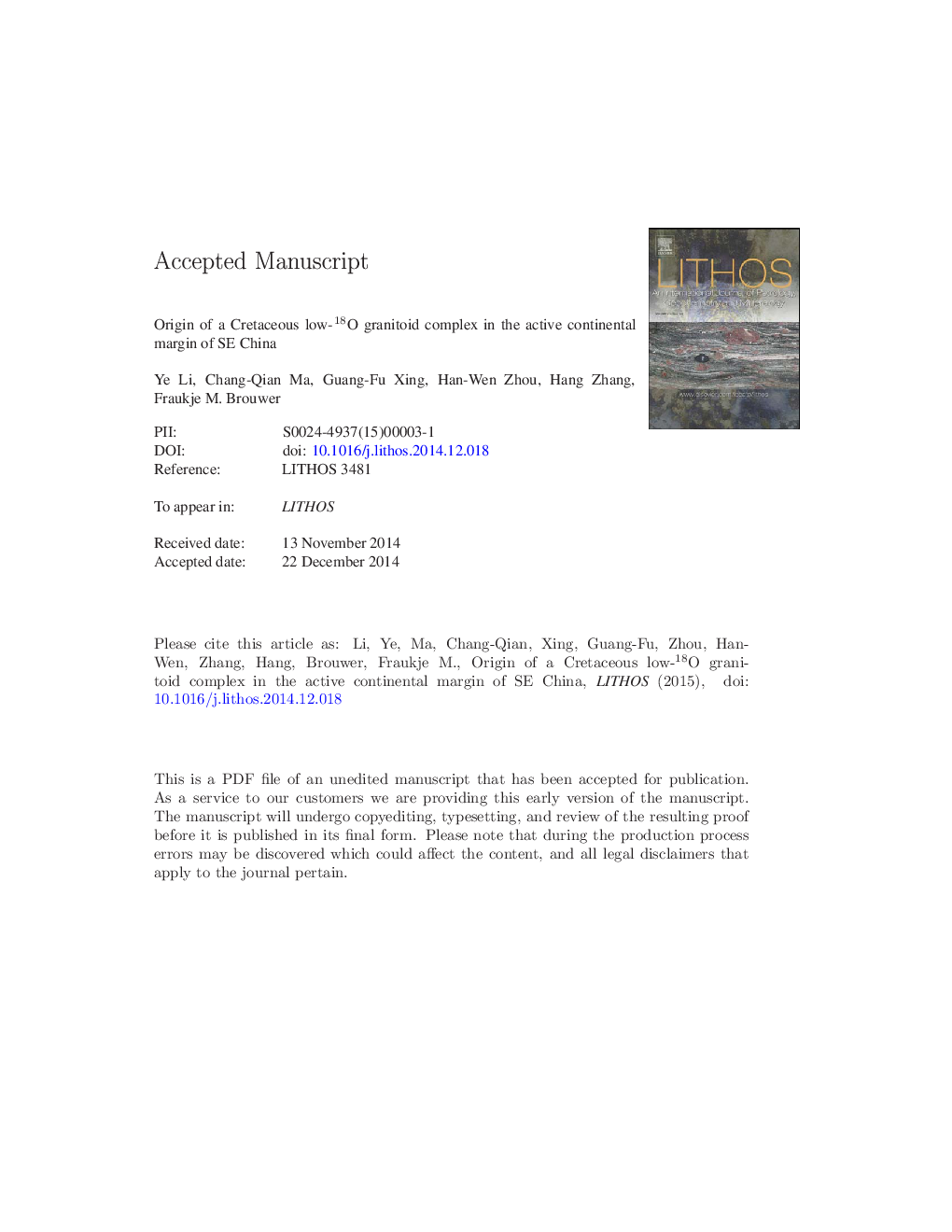| Article ID | Journal | Published Year | Pages | File Type |
|---|---|---|---|---|
| 6440767 | Lithos | 2015 | 56 Pages |
Abstract
Low-18O felsic igneous rocks (with δ18O values of < 5â°) are a group of volumetrically minor rocks that in their genesis require involvement of oxygen from seawater or meteoric water at high temperature. Most low-18O felsic rocks are reported in caldera or rift settings, where high-temperature hydrothermal exchange of surface waters with source rocks readily imprints low-18O water values. Some low-18O felsic rocks occur in other settings, and their genesis remains controversial. In this paper we report a Cretaceous low-18O granitoid complex at Xiaocuo in SE China Coast. This complex consists of granites, granodiorites and diorites; all these rocks dated at ~ 116 Ma have zircon δ18O values between 3.8 and 5.2â°. They are metaluminous to weakly peraluminous (A/CNK = 0.84-1.13), and characterized by homogenous isotopic compositions (i.e., initial 87Sr/86Sr (ISr) = 0.7054-0.7056, εNd(T) = â 1.6 to â 2.6, zircon εHf(T) = â 0.6 to + 3.5 and zircon δ18O = 3.8-5.2â°), high Na2O/K2O (> 1), low Sr/Y (7.23-49.5) and La/Yb ratios (6.87-46.0) and relatively low Zr saturation temperatures (~ 730 °C). In addition, the diorites and granodiorites contain a variety of inherited high-Ca plagioclase (An = 60-87). We demonstrate that the Xiaocuo granitoid rocks were derived from preexisting, subduction-related metabasic source rocks. Their low δ18Ozrc values (3.8-5.2â°) are reflective of their source compositions. The formation of the low δ18O source rocks is most likely formed in a subduction-induced lithospheric extension regime during Early Jurassic to Early Cretaceous time when a Basin and Range-like province developed in SE China. Intensive lithospheric extension could have increased the fracture permeability and facilitated deep-circulated surface waters for exchanging with the source rocks at high temperature at depth, making the metabasic source rocks depleted in 18O. Remelting of the 18O-depleted metabasic intrusive source rocks produced the Xiaocuo low-18O granitoid complex at ~ 116 Ma. Our work indicates that, in addition to the caldera and rift settings, extensional active continental margin could also be a favorable setting for the formation of low-18O granitoid rocks.
Related Topics
Physical Sciences and Engineering
Earth and Planetary Sciences
Geochemistry and Petrology
Authors
Ye Li, Chang-Qian Ma, Guang-Fu Xing, Han-Wen Zhou, Hang Zhang, Fraukje M. Brouwer,
